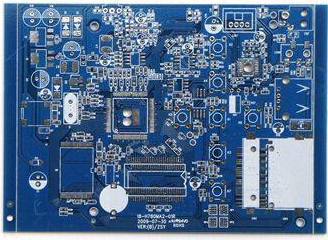When PCBA is processed into a reflow oven, board bending and board warping are prone to occur. How to prevent the circuit board from passing through the reflow oven and causing board bending and board warping. Next, the relevant countermeasures are introduced:
1. Reduce the influence of temperature on circuit board stress
Since "temperature" is the main source of stress on the circuit board, as long as the temperature of the reflow oven decreases or the heating and cooling speed of the circuit board production in the reflow oven slows down, bending and warpage will decrease. The board can be greatly reduced. happen. However, there may be other side effects, such as welding short circuits.
2. PCB uses high Tg board

Tg is the glass transition temperature, that is, the temperature at which a material changes from a glassy state to a rubbery state. The lower the Tg value, the faster the circuit board will start to soften after entering the reflow oven and become soft and rubbery. The time will be longer, and the deformation of the circuit board will of course be more serious. Using higher Tg boards increases their ability to withstand stress and deformation, but high Tg PCB boards are more expensive.
3. Increase the thickness of the board
In order to achieve the purpose of being lighter and thinner, many electronic products have a thickness of 1.0mm, 0.8mm or even 0.6mm. This thickness is required to prevent the circuit board from deforming after passing through the reflow oven. The strong are hard. It is recommended that if there is no requirement for thinness and lightness, it is better to use a thickness of 1.6mm for the circuit board, which can greatly reduce the risk of bending and deformation of the circuit board.
4. Reduce the size of the circuit board and reduce the number of panels
Since most reflow ovens use chains to drive the circuit board forward, a circuit board with a larger PCB design size will be deformed in the reflow oven due to its own weight, so please try to use the long side of the circuit board as the edge of the circuit board. Putting it on the chain of the reflow oven can reduce the sagging deformation caused by the weight of the circuit board itself. It is also for this reason that the number of slabs is reduced. In other words, when the furnace is over, try to use the narrow side perpendicular to the direction of the furnace. Achieve the smallest amount of depression deformation.
5. Use oven tray fixtures
If the above method is difficult to achieve, the last step is to use an oven tray to reduce the amount of deformation. The reason why the pallet can reduce the bending of the board is because the pallet can hold the board regardless of thermal expansion or contraction. After the temperature of the board is lower than the Tg value and then hardened again, the original size can be maintained.
If the single-layer pallet cannot reduce the deformation of the circuit board, it is necessary to add a layer of cover on the upper and lower pallets to clamp the circuit board, which will cause the problem of circuit board deformation. It can be greatly reduced on the reflow oven. However, such oven trays are very expensive and must be manually placed to place and recycle the trays.
6. Use a router instead of V-Cut
Since V-Cut will destroy the structural strength of the plates between the plates, try not to use V-Cut plates or reduce the depth of V-Cut.